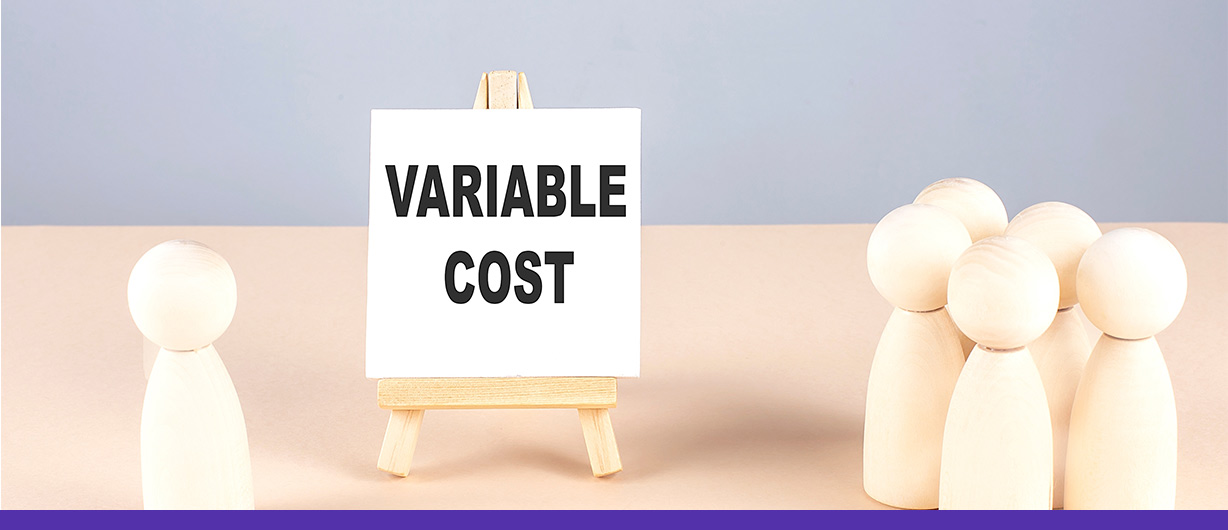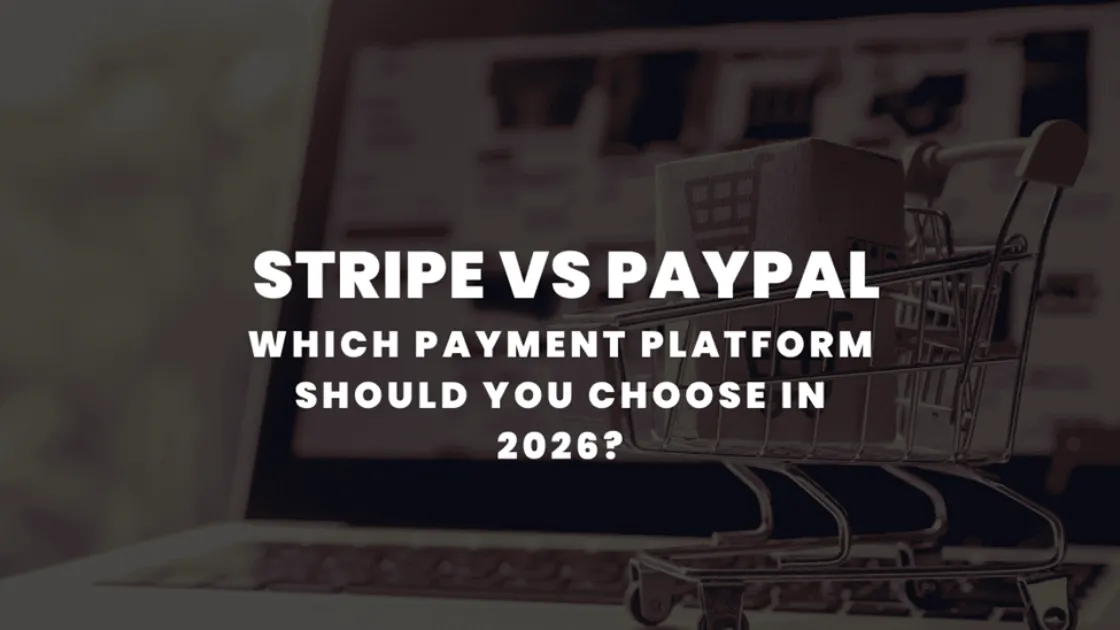June 8 2023 | By Farwah Jafri | 6 minutes Read

What is a Variable Cost?
Calculating Variable Cost
Types of variable costs
1. Direct Labor Costs
2. Direct Material Costs
3. Direct Sales Commissions
4. Variable Overhead Costs
5. Variable Distribution Costs
6. Variable Marketing and Advertising Costs
Importance of variable cost
1. Profitability
2. Cost Management
3. Pricing Strategies
4. Decision Making
What is the difference between fixed and variable cost
Endnote
Understanding and effectively managing costs is crucial for success in the dynamic business world. One important aspect of costs that every entrepreneur and manager should grasp is variable costs. Unlike fixed costs, these expenses vary in direct proportion to the production or sales volume level. They play a significant role in determining a business’s overall profitability and competitiveness.
This blog post will delve into what variable cost is, exploring its definition, examples, and implications for businesses. By understanding variable costs, you’ll be equipped with valuable insights to make informed decisions and optimize your company’s financial performance.
So, let’s dive in and unravel the mysteries behind what variable cost is!
The formula for variable cost is:
Variable Cost = Quantity of Output X Variable Cost per Unit
To calculate it, you need to determine the quantity of output and the variable cost per unit.
The quantity of output refers to the number of units produced or the activity level. It could be measured in various units, such as the number of products manufactured or number of hours worked.
The variable cost per unit represents the cost incurred for each output unit. It includes costs directly related to producing goods or services that vary proportionally to the output level. Variable costs can include raw materials, direct labor, and other expenses tied to the production process.
Let’s illustrate with an example:
Suppose a company produces widgets each month. It manufactures 1,000 widgets. What will be the variable cost per unit of widget production at $5.
Using variable cost formula, we can calculate the variable cost as follows:
Variable Cost = Quantity of Output * Variable Cost per Unit
Variable Cost = 1,000 widgets * $5 per widget
Variable Cost = $5,000
Therefore, the variable cost for producing 1,000 widgets is $5,000. As the company increases or decreases its production volume, the variable cost will change accordingly, maintaining a proportional relationship with the output level.
Variable costs are expenses that fluctuate directly to changes in production or sales levels. The main types of variable costs include:
These are wages and benefits paid to employees directly involved in production. The cost varies based on the number of hours worked or units produced.
These are materials and supplies directly used to produce goods or services. The cost varies based on the quantity of materials used.
These are commissions paid to sales personnel based on the number of units sold or the sales value. The cost varies with the level of sales achieved.
These expenses vary with the level of production or sales but do not directly relate to labor or materials. Examples include utilities, maintenance, and packaging costs.
These are expenses associated with delivering products or services to customers, such as transportation, shipping, and packaging costs. The cost varies based on the volume of goods delivered.
These promotional expenses vary based on the level of marketing and advertising activities undertaken to promote products or services.
Businesses incur these variable costs that can be managed and controlled by adjusting production levels or sales strategies.
As we know what a variable cost is let’s explore why it is important.
Variable cost is a crucial concept in business and economics, representing expenses that fluctuate directly to the level of production or sales. It contrasts with fixed costs, which remain constant regardless of output levels. The importance of variable cost lies in its impact on profitability, cost management, pricing strategies, and decision-making processes within a business.
Variable costs directly influence the profit margin of a product or service. By understanding and controlling these costs, businesses can assess the impact on their bottom line. Higher variable costs can reduce profitability while lowering variable costs can increase it. Monitoring and managing variable costs allow businesses to optimize their profit margins and achieve sustainable growth.
Identifying and managing it is vital for effective cost management. By analyzing the components of variable costs, businesses can identify areas where cost reduction or efficiency improvements are possible. It can be achieved through various measures, such as streamlining production processes, negotiating better supplier contracts, optimizing inventory management, or implementing technology-driven solutions. Effective cost management of variable costs enables businesses to operate more efficiently and maintain competitiveness in the market.
Variable costs play a significant role in determining pricing strategies. Understanding the relationship between variable costs and sales volume helps businesses set fair prices to cover these costs and generate desired profit margins. Setting prices too low without considering variable costs may lead to losses while setting too high can deter customers. Businesses can balance profitability and market demand by incorporating variable costs into pricing decisions.
Variable costs are essential for business decisions. For instance, businesses must evaluate the expected revenue against the associated variable costs when assessing the feasibility of introducing a new product or service. This analysis helps determine if the venture will be profitable. Similarly, considering variable costs provides insights into the scalability and potential financial implications when evaluating production volume or expansion plans.
Overall, variable costs are integral to financial management, enabling businesses to measure profitability, manage costs effectively, make informed pricing decisions, and assess the viability of business initiatives. By understanding and controlling variable costs, businesses can enhance their competitiveness, improve financial performance, and achieve sustainable growth.
Variable costs and fixed costs are two types of expenses incurred by businesses. Here’s a concise explanation of the difference between the two:
Variable Costs: Variable costs are expenses that change in proportion to the level of production or sales. They vary based on the quantity of goods or services produced. Examples of variable costs include direct materials, direct labor, and sales commissions. As production or sales increase, variable costs also increase; as production or sales decrease, variable costs decrease.
Fixed Costs: Fixed costs, on the other hand, are expenses that remain constant regardless of the level of production or sales. These costs do not vary in the short term and are typically incurred regardless of the business’s activity level. Examples of fixed costs include rent, salaries of permanent employees, insurance premiums, and annual subscription fees. Changes do not directly influence fixed costs in production or sales volume.
In summary, variable costs fluctuate with the level of production or sales, while fixed costs remain constant over a certain period, regardless of the business’s activity level.
Variable costs play a crucial role in understanding the financial dynamics of a business. By grasping the concept of variable costs and how they fluctuate with production or sales volume changes, entrepreneurs and managers can make informed decisions to optimize their operations and maximize profitability. Variable costs provide valuable insights into cost control, pricing strategies, and break-even analysis, enabling businesses to adapt to market conditions and achieve long-term sustainability. By managing variable costs effectively, businesses can enhance their competitive edge and drive growth in today’s dynamic and evolving marketplace.
Also Read: How To Calculate Manufacturing Overhead Costs
Subscribe for business tips, tax updates, financial fundamentals and more.
MORE BLOGS

If you’re a small business, we will absolutely get it if you say you’re having a hard time choosing a payment platform for your company. And […]
Learn More →
When it comes to accounting, businesses often face a confusing question: which accounting method should we adopt? The choice typically boils down to the cash basis […]
Learn More →
Driving for Uber or delivering with Uber Eats can be a flexible and rewarding way to earn money. But when tax season rolls around, many drivers […]
Learn More →